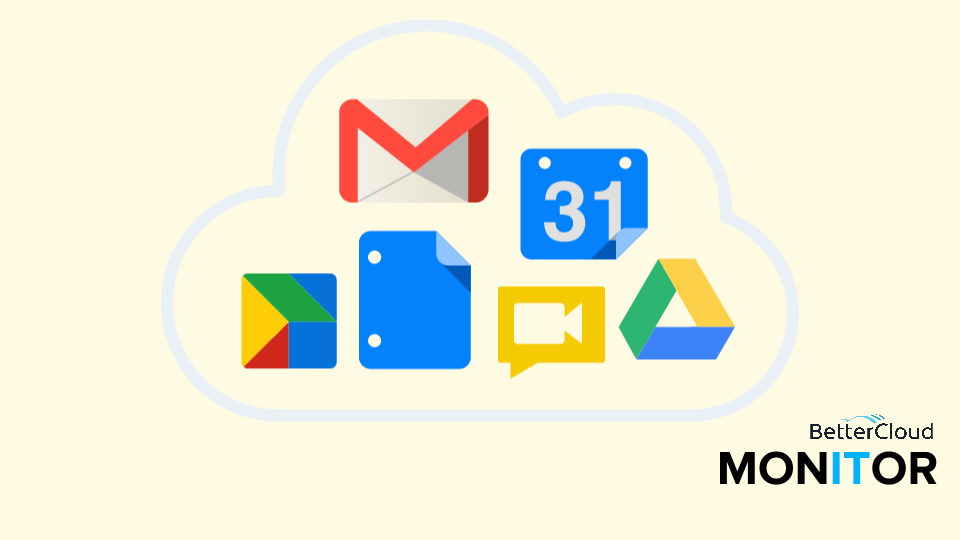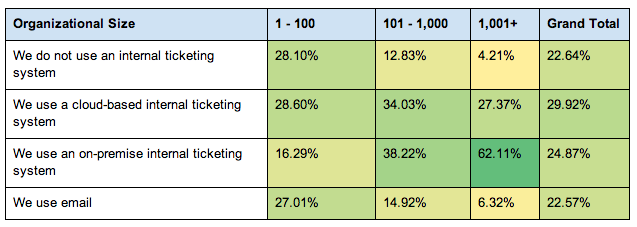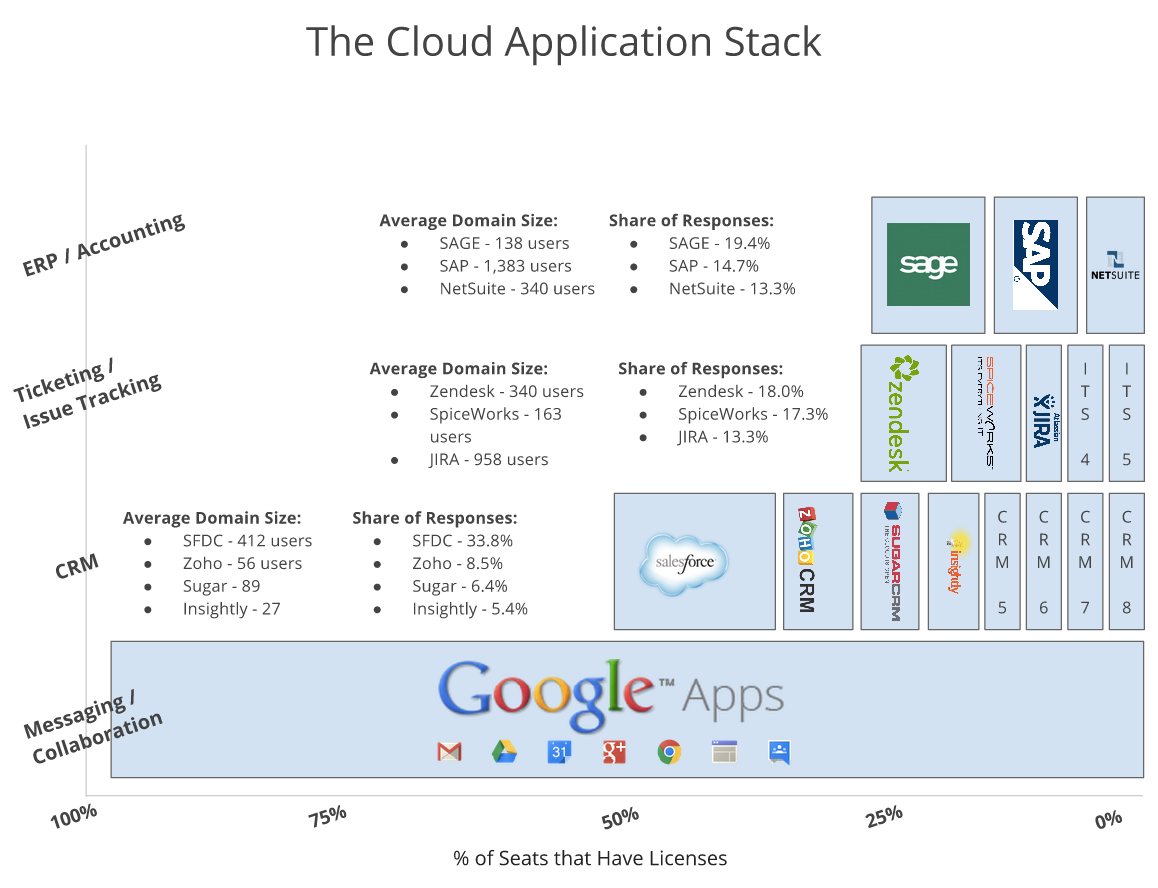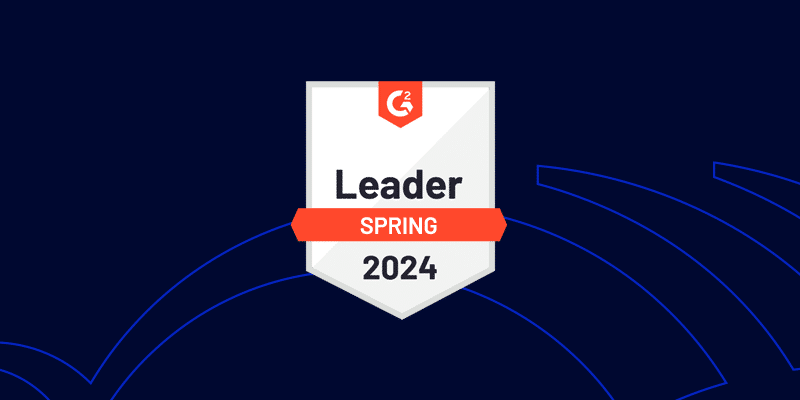Google Apps Provides the Critical Foundation for a Growing Cloud Application Stack
August 1, 2013
13 minute read

As our user base has steadily grown over the last year, we’ve made a concerted effort to stay in touch with as many customers as possible. Whether that’s through one on one training sessions, phone calls or our quarterly surveys, the success of BetterCloud is directly linked to the relationships we have with our expanding customer base. While ideally we’d like to personally call every FlashPanel customer, nearly 30,000 IT admins, that’s simply not possible. Instead, we’ve found the most efficient way to garner large scale and immediate feedback on our product and cloud adoption is through surveys like this one.
In this survey, we chose to focus on three key areas:
- Profiling the Customer
- Mapping Out the Cloud Application Stack
- FlashPanel’s Role in Replacing Legacy Technologies
And here are some of the highlights:
-
- The challenges of moving 100% to the cloud are becoming more surmountable and the benefits of doing so have evolved beyond cost considerations. According to customers surveyed, the length of time it will take before we reach full cloud adoption is not far off.
-
- In a very short period, Google Apps has become the critical foundation of the cloud application stack. Other layers (CRM, internal ticketing systems, ERP) are very fragmented, but we’ve identified the early leaders and their overlap with Google.
- We’ve reached a crucial tipping point where enterprises have made the investment, both mentally and time wise, in Google Apps and are ready to replace remaining Microsoft technology (ie. SharePoint and Active Directory). It’s time for Google and third-parties to provide companies with the features they need.
Of the 24,425 Google Apps for Business administrators surveyed, we received responses from 1,573. (We will publish data gleaned from EDU customers in the coming weeks). Our previous surveys have received very positive feedback and we hope that by sharing the following information, we’re able to help the ecosystem as a whole: customers, resellers, ISVs and even Googlers.
**Disclaimer: The data and opinions discussed herein are entirely our own. They do not reflect information or feedback from Google or any other entity.
Profiling the Customer
Looking back on our previous two surveys, we realized that we’re constantly referring to survey “respondents” in an abstract way, which made us think “we should profile the customer.” To give resellers, ISVs and Googlers a better sense of their target customer and other admins a better picture of their colleagues, we’ve provided an in depth profile of a typical Google Apps administrator.
**The following data represents information from customers who manage Google Apps domains with 20 or more users. We found that among domains with fewer than 20 users, the CEO or a non-IT employee was responsible for Google Apps management.
Key Takeaways
Over a quarter of Google Apps admins already have experience administering a Google Apps domain. These administrators will only increase the momentum already behind Google Apps as they leave existing jobs for new companies. While it’s difficult to displace the inertia Microsoft has built up over the last 20 years, natural career moves over time and growing familiarity with the Google Apps platform will help to further disrupt Microsoft’s hold on the enterprise.
It’s also interesting to note that nearly 70% of all customers either advocated for or drove their organization’s decision to go Google. While CIOs undoubtedly guide the overall IT strategy in their organizations, they are usually not responsible for evaluating, implementing and managing the technologies that make up their strategy. These days many CIOs are making the switch to a long term, cloud only strategy and are looking to their team to run proof of concept, talk to vendors and ultimately roll out new technologies. So, as important as the CIO and executive level IT personnel may be in the purchase of some of these products, significant parts of this process are actually driven by the System Admin/IT Director.
We believe that the execution of a company’s IT strategy lives and dies with the System Admin and we think it’s important for the ecosystem to understand who these customers are: experienced, knowledgeable IT professionals who support the move to the cloud.
Mapping Out the Cloud Application Stack
**The following data represents information from the 1,573 Google Apps for Business admins surveyed.
Now that we’ve identified the customer, we can begin to outline his or her organization’s outlook on full cloud adoption and pinpoint both their perceived hurdles to and benefits of moving to the cloud. We’re also examining what a typical cloud-based organization looks like, which software it uses, how many people in the organization are using that software and more.
Moving Towards a 100% Cloud Environment
Most people would argue that we’re in the middle of an enterprise IT revolution with a move to the cloud occurring across the board. The question, however, is determining where we are in this process – the beginning, the middle or the end? Will cloud applications replace all legacy systems? Is it just a matter of time? Or, are legacy systems destined to be part of a company’s IT infrastructure forever? These are difficult questions to answer.
When it comes to full cloud adoption, Workday CEO Aneel Bhusri, has been quoted as saying that, “We’re in the early phase, I’d say year 3 of what will be a 10 to 15-year replacement cycle.” However, the average BetterCloud customer appears to be ahead of the curve, likely because of the foundation they’ve created on Google Apps (more on this later).
In terms of full cloud adoption, 44.6% of customers believe it will take a little over 3 years – 3.6 to be exact – to move their company’s IT infrastructure (software for office productivity, collaboration, messaging, coordination and business management (CRM, accounting and ERP)) completely to the cloud and 28.7% of customers have already done so.
While we’re still in the early days of full cloud adoption across the board, the opportunity and potential is extremely exciting. Companies seldom have a chance to reimagine the way they run their businesses and providers are rarely given the opportunity to disrupt the traditionally stagnant enterprise IT space.
Hurdles to Cloud Adoption
While of course not every one of our customers operates 100% in the cloud, we believe the hurdles preventing speedier adoption can be easily overcome, as noted below.
Though many customers have either already moved fully to the cloud or feel such a move is inevitable (73.4%), some still cite significant hurdles to cloud adoption, primarily around user attachment to existing legacy software.
While any hurdle in the way of broader cloud adoption is not ideal, it is somewhat of a relief to see that user attachment to legacy software is the most significant obstacle for many organizations. Among younger employees, attachment to legacy software is likely to be a non-issue as many of them have grown up using Google and other cloud technology.
We believe that proper training and change management can wean users off legacy software. We’ve said time and again that organizations moving to Google Apps often do not invest enough resources in change management. General cloud awareness and advancements in technology have mitigated concerns about migrations and data security and it’s now time to overcome the natural human tendency to resist change. By properly training users and truly displaying how Google and other cloud products can help to improve life at work, overall user attachment to legacy products will dwindle.
“[Our biggest hurdle in the purchase of cloud products is] user attachment to Microsoft Office products.”
– Manufacturing Company, 121 Users
Benefits of Moving to the Cloud
While there are hurdles facing full cloud adoption, there are also a number of benefits propelling cloud adoption forward.
Benefits of Moving to the Cloud

While employees are still somewhat attached to legacy software, they’re also in need of a way to access their work data from anywhere. From a consumer standpoint, cloud computing is ubiquitous. Facebook and Google+ store photos in the cloud, Netflix allows you to stream from the cloud – there are hundreds of examples where cloud computing has invaded consumers’ lives. Employees now truly expect to “work the way they live” and the ability to work from anywhere on any device is an important component of that expectation. Not to mention, giving employees the ability to work from anywhere makes them happier, more efficient and more productive. Overall, this trend benefits all parties involved.
While one may have thought cost savings, selected by only 15.1% of customers, would be the biggest perceived benefit of moving to the cloud (a few years ago, this may have been true), it’s encouraging to see companies realizing benefits of the cloud outside of cost savings. We believe the ecosystem needs to double down and really promote the message of work from anywhere. We need to show companies how a cloud infrastructure can truly change the way their employees works.
“[Our biggest benefits of moving to the cloud are] collaboration, access to data from anywhere and reduced capital and infrastructure costs.”
– Financial Services Company, 309 Users
Google Apps and Complementary Cloud Products
Now that we’ve examined what is and is not standing in the way of full cloud adoption, let’s take a look at the other most common types and categories of cloud applications used by enterprises.
Google Apps as the Foundation
Messaging and collaboration is a natural foundation for an organization’s cloud application stack. Nearly every person in every organization uses email and while it’s not always the first piece of the cloud application stack to be put in place, email ends up being the foundation on top of which everything else sits.
When you look at the cloud messaging space specifically there are really only two players: Google Apps and Microsoft Office 365. We believe that at some point down the road, these two players will each hold 50% of the market. In fact according to Gartner, Google already owns 50% of the cloud-messaging market as of last year. We believe this number will at first grow and then ultimately level out as Microsoft determines its strategy with Office 365. It may take years for this to happen, but it’s only inevitable as more companies move to the cloud.
The Rest of the Cloud Application Stack
Google Apps provides a solid foundation for the cloud application stack with subsequent layers made up of CRM, ticketing, ERP/Accounting and other software. As you look at the stack, the percentage of people using software at each layer dwindles, but the value of that software may actually increase (especially around ERP/Accounting). While we asked customers to tell us about their use of CRM, ticketing and ERP/Accounting software, here we’re focusing on CRM. We discovered that in organizations using a cloud-based CRM, 51.8% of employees are given licenses.
Overall, 39.3% of customers do not use a CRM, 19.1% use an on-premise CRM and 41.6% use a cloud-based CRM.
Of the 41.6% of customers who use a cloud-based CRM, we found that 33.8% use Salesforce.com as their CRM of choice. Zoho came in second with 8.5%, followed by Sugar with 6.4% and Insightly with 5.4%. All in all, there were over 100 unique CRMs listed, showing a highly fragmented CRM space.
While the CRM space is fragmented, Salesforce.com appears to be the clear winner among cloud-based CRMs for enterprise customers. Customers representing organizations that use Salesforce.com have an average of 412 users in their organization. Considering the vast overlap between Google Apps and Salesforce.com and the substantial average size of customers who use both services, it’s interesting that there has yet to be any native integration between the two systems.
While these two cloud giants have yet to provide any native integrations between one another, third-party providers have stepped into fill the very real void. Both Cirrus Insight, which is dedicated to integrating Google Apps and Salesforce.com, and Yesware, which provides functionality to link the two, have proven the value of integrations between Apps and SFDC. It’s extremely puzzling that native integration is still not available, especially given the recent announcement coming from Salesforce.com and Oracle. After all, don’t you think users would prefer to live entirely in their inbox rather than going back and forth between Gmail and Salesforce.com?
When it comes to ticketing systems, of customers using cloud-based systems, Zendesk was the preferred vendor (18%). While nearly a quarter (22.6%) of all of our customers use email for ticketing, we feel that as cloud becomes more mainstream, more organizations will transition from email to a proper cloud-based system. After all, organizations that do so stand to gain added efficiency, automation, tracking and very likely ticket resolution times.
So, if you take the information we gathered from the survey in regards to messaging, CRM, ticketing and ERP, you end up with our view of the cloud application stack with Google Apps as the foundation.
Key Takeaways
Google Apps Resellers
The move fully to the cloud is already underway. You were an integral part of the migration to Google Apps and as such, you now have the opportunity to work up the stack over time and leverage the trust you earned with your customer base. You are in a position to help customers realize the 100% cloud vision.
Just as you picked a winner in Google Apps for messaging and collaboration, move up the stack by choosing a winner in each category. Since 50% of an organization has CRM licenses, this seems like an obvious place to start. CRM vendors differ quite a bit in terms of reseller programs and target markets, so make sure you find a system that suits your needs and those of your customers.
The next 3.6 years will be key in your customers’ move to 100% cloud and there are still 19.1% of companies using on-premise CRMs. The opportunity here is huge.
Over time, as you’re successful in the CRM layer, continue to move up the stack.
ISVs
The Google Apps customer base is fast growing and fully embracing the cloud. And we’ve heard over and over that customers are looking for deeply integrated products. But, to gain broad adoption, you can’t just stick your product in the Google Apps Marketplace. You need to ensure that the application has deep integration with the Apps suite and is enabling users to work more efficiently. Google continues to release APIs and other extensible tools (like schemas, released at this year’s Google I/O), which allow ISVs to build deeply integrated products. Customers want and need these valuable connectors, seize the opportunity to deliver.
FlashPanel’s Role in Replacing Legacy Technologies
We view FlashPanel in terms of four main areas of functionality: administration, security, automation and insights. Through this survey we sought to understand customer needs in each of these areas. Ultimately, we uncovered two very interesting findings.
Bolstering Enterprise-Grade Controls for Google Drive
When we launched Google Drive management and security features for FlashPanel in October 2012, our customers began using these tools immediately. Clearly we were onto something.
Google has been steadily improving Docs and the launch of Drive last year was a game changer for enterprises. But, so much openness and power brings trepidation from businesses that need to put various controls in place. And while BetterCloud and others have been working to provide those controls, we have more to accomplish.
More specifically, we found that 46.5% of customers would like us to add functionality to FlashPanel that would enable them to use and manage Drive like SharePoint. It’s clear that there is a huge opportunity here and if Google and third-party ISVs can solve this issue, it will be yet another blow to the Microsoft monopoly. We’ve decided to take on this problem at BetterCloud and are in the early stages of mapping out our roadmap to provide this functionality. If you’re interested in participating in wireframe reviews or providing any feedback, please let us know by emailing me at dave@bettercloud.com.
“I would like to be able to have a Google Drive master account that is able to see what all the users have as a file system like Windows Explorer so I can manage the files there the same way I do on my local file shares.”
– Computer Games Company, 77 Users
Changing the Way Companies See Active Directory
When asked, “Which of the following features would you most like to see added to the Create User Workflow in FlashPanel (Guided and / or Bulk)?”, 29.0% of customers said they would like to see the addition of a templated workflow with one-click user provisioning.
This request closely aligns with functionality available to IT admins in on-premise systems. Through Active Directory, admins could very easily image a user’s device and grant access to relevant on-premise data and applications seamlessly. IT admins are hoping that by using an employee’s Google Apps identity, FlashPanel can provide a similar experience in the cloud. And we’re hoping that enhanced user provisioning and deprovisioning workflows will serve as an antidote to AD.
A large percentage of FlashPanel customers regularly use the application’s user provisioning and deprovisioning workflows. When we examine these workflows – particularly for provisioning – more closely we realize that due to the vast nature of the Google Apps suite and the number of features that need to be enabled, configured and assigned, it’s becoming increasingly challenging to do so in an efficient and effective way that doesn’t leave the opportunity for tasks to fall through the cracks.
When Google Apps launched, Google had to build tools like Google Apps Directory Sync (GADS), Google Apps Password Sync (GAPS) and Google Apps Sync for Microsoft Outlook (GASMO) to ensure that they could ease the transition from legacy systems to Google, on both the user and admin sides. But, as Apps has become more robust, these tools are no longer suitable to provision users efficiently. If you’re using GADS, you can create or suspend a user, but you cannot set email settings or assign documents from Drive. If you’re using GASMO, you’re missing out on dozens of features that are available in the Gmail interface, but not in Outlook.
We’re going to reach a tipping point where the old way of doing things will no longer suffice. We’ve already spoken with customers who are moving from Active Directory to the Google Apps directory and we’re trying to help more companies make that move.
Moreover, with cloud messaging and collaboration at the foundation of the cloud application stack, Google (and yes, Office 365) are well positioned to become the single sign on (SSO) providers. Third parties providing SSO capabilities will find it harder and harder to compete with these giants as more native features are released and more ISVs utilize SSO through corresponding Marketplaces. Existing SSO providers will likely be successful serving customers who are still using legacy and on premise applications.
“We currently have concerns with the GADS option. It’s too easy to accidentally delete a user.”
– Healthcare Supply Chain Management Company, 80 Users
Key Takeaways
Google Apps has been steadily expanding its user base since its launch in 2006. Now, the platform is finally at a point where it’s set to function as the base of a company’s overall IT infrastructure. We’ve long held the belief that Google will win in the cloud enterprise messaging space and we feel it’s our job to provide the tools enterprises need to fully adopt the suite.
Final Thoughts
Each one of our surveys has given us deeper insights into how quickly Google Apps is maturing. Whether it’s the fact that companies are no longer investing in Microsoft Office or that companies are rapidly adopting newer areas of the suite, it’s clear that Microsoft’s stranglehold on the enterprise is waning. Google’s enterprise division has, in true Google fashion (think the Chrome browser), come seemingly out of nowhere. It’s now a two-horse race and we’re betting on Google.
In the short years since Apps’ launch, System Admins have grown more comfortable with the platform and many advocate for it both within and outside of their organizations. Resellers’ businesses have grown and we’re seeing more new entrants all the time. And ISVs have become more sophisticated, providing deeper integrations with Apps and more functionality to admins and end users.
Google Apps as the foundation of the cloud application stack is a lofty statement, but one that we truly believe in. Messaging and collaboration touches every user within an organization and Apps therefore serves as an ideal launching point for software tie ins, integrations and user cloud identity management.
We believe we’re still in the very early stages of the fight between Google and Microsoft and the move to the cloud as a whole. The stage is set for disruptive change.











